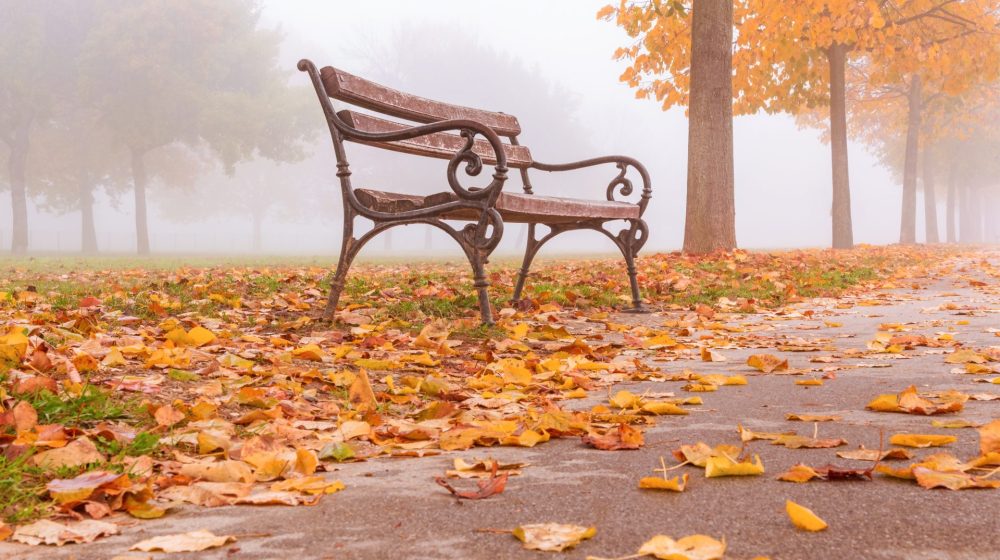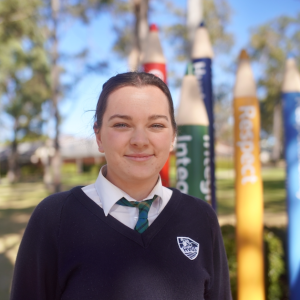Published on July 20, 2023

She sits on the beautifully crafted wooden stool in that peaceful garden. The autumn leaves pooled around her feet, infiltrating the space around her. Light stretches to reach the damp grass and the Willy Wagtail jumps from branch to branch, flittering along the ground. The girl squints at the children playing tag in between the trees; the old couple strolling along the concrete path. All is well, nature comforts oneself like a mother to her newborn. Yet moments later, her attention is snapped by the mobile phone clutched in her hand. Her TikTok feed becomes more enthralling than the wonderland around her.
This scene is synonymous with our modern world and yet a simple glance into the history of art and literature suggests that composers have been interrogating humanity’s disconnection with the natural world for centuries.
William Wordsworth, Vincent Van Gogh, T.S. Eliot, Claude Monet, John Keats and David Attenborough – Steve Irwin even – all used various mediums to represent the intersection of humanity and the natural world. They preach to humanity to realise the importance of their perspective and take the time to reconnect with nature.
Wordsworth’s poetry can seem somewhat repetitive as his admiration for nature is confessed again, and again. He says, “Nature never did betray/The heart that loved her” and “Little we see in Nature that is ours; We have given our hearts away” to combat human’s prioritisation of wealth and worldly possessions and prompt society to recognise the power that nature has to offer. He suggests that reconnecting with the natural world will heal all wounds, spiritually reconnecting us to all life has to offer.
But is nature as all-powerful as he makes it seem?
One hypothesis from biologist E.O. Wilson suggests that for evolutionary reasons, humans sought out experiences with nature by instinct. Due to the hunter-gatherer roots of humans, we sought beautiful landscapes because they provided food, shelter and comfort.
The importance of this connection? Studies suggest that time spent in nature attributes to the flourishment of social, psychological and emotional components of our lives, contributing to the overall well-being and success within an individual’s life.
In the busy and bustling days of our lives, I think we tend to forget this connection to nature and yet the time we spend in mundane activities, driving to work or school, for example, offer an opportunity to appreciate the world around us. I think most of the time, it is ignored as we search for a distraction, the phone sitting in our hand.
In the modern world of technology, this connection to the natural world is becoming increasingly strained. My dreams to travel are fuelled by the travel influencers I follow online. It fills me with inspiration and a need to explore beautiful landscapes of places such as Vietnam or Greece. However, it evokes a sense of frustration at the fact that I am currently stuck in high school when so much is available elsewhere. A while ago I was sitting in my hammock, scrolling through Instagram when I realised that the same sun immortalised on my phone was setting over the paddocks in front of me. That instead of admiring the world which surrounded me in my own backyard, I was wishing to be elsewhere, in a place that was staged so beautifully for me by an influencer. I think we all become entranced by our devices or the possibilities of what could be rather than what is right in front of us.

As a whole nation our disconnection to nature has become exacerbated by the infiltration of technology into our everyday lives. The concept of relaxation and rejuvenation has been redefined. My way of relaxation is to put on my pjs and nestle in bed, watching the film ’10 Things I Hate About You’ on repeat. Perhaps it’s time to replace that with a picnic in the garden or tea on the balcony.
Many cultures within society are bearing the brunt of our apathy towards the natural world. The First Nations peoples of Australia display a loss of culture and connection to Country due to a forced disconnection to the natural world.
For First Nations peoples the Australian landscape surrounding us is their spiritual guide as well as their spiritual partner. The concept of Country encompasses both the physical land and the space in between.
Relationships with country are grounded by reciprocity, exhibiting a mutual respect and exchange. In other words, the relationship between humans and the natural world is one of give and take, a symbiotic relationship. Many of the hunter-gatherer practises of Indigenous Australians are incredibly regenerative. They never took more than they required to survive and would rotate hunting grounds to allow for restoration of populations.
The First Nations culture is beautiful and to be admired, yet the sad reality is that as society becomes increasingly disconnected from nature; this culture is at risk of being lost. There is so much that our modern world could learn from their concept of Country and their relationship with it, not only for the good of the environment but also for the good of the people.
This could be adapted into our modern world, Aboriginal peoples utilise a Yarning Circle to connect to the world around them, as a space of acceptance and gratitude. The circle itself is a symbol of the interconnectedness of all forms of life, practising similar ceremonies could be the first step into regaining our connection to the natural world. The Yarning circle could be the one place where no-one, as a universal rule, takes a technological device of any kind. Access to a Yarning Circle could become enriching for everyone, reinstating the sense of community and gratitude for the surrounding landscape – even those mesmerised by their phone.
…
She dodges the small children playing in-between the trees. Following a well-known track worn into the dirt of that small park. The autumn winds threaten to break the barrier of her woollen trench coat and, as she rounds the corner, she breaks into a small clearing. A circle created by white gravel absorbs the space and rocks outline the shape. An old lady sits on the furthest rock, beside her a small boy is weaving grass into a crown. Others crowd the area, mingling, faint laughter infiltrating the space. The girl smiles to both, taking a seat next to the small boy. The ceremony is about to begin, and the world seems brighter.

